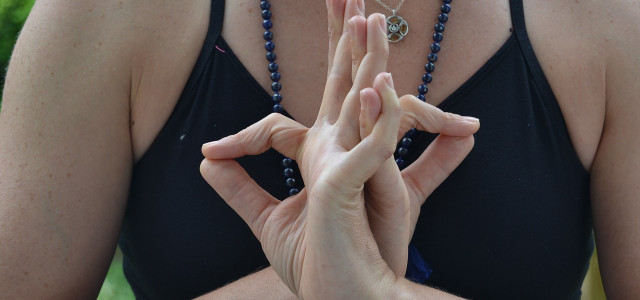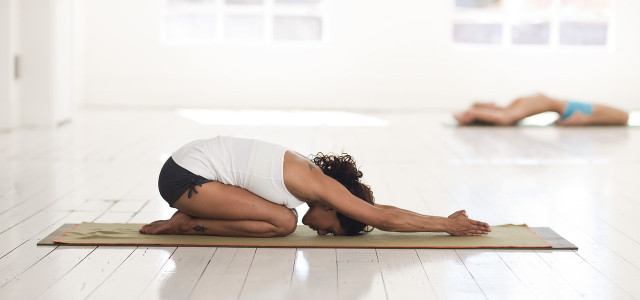If you struggle to recover from upsetting or stressful events, self-soothing techniques could help get back to balance, health, and a better mindset. Find out how.
Self-soothing techniques describe a range of methods people use to heal themselves and balance their emotions, thoughts, bodies, and well-being after a stressful or traumatic event. They can range from healthy and beneficial self-soothing techniques — to dangerous and destructive options. Using alcohol, food, drugs, and other unhealthy mechanisms to self-soothe ultimately leads to negative cycles and coping abilities.
Developing self-soothing techniques that promote physical, psychological, and emotional equilibrium might just help you bounce back from challenges and traumas. We’ll provide suggestions that help you self-soothe instead of self-destruct.
Self-Soothing Techniques
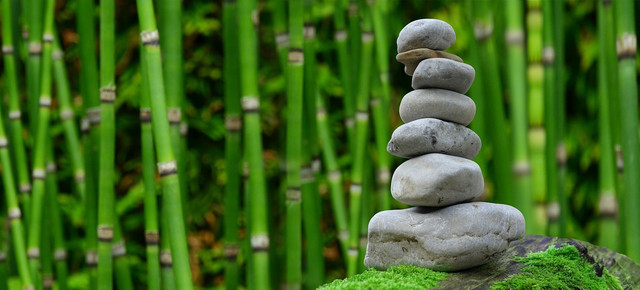
(Foto: CC0 / Pixabay / Schäferle)
According to some experts, self-soothing techniques are often used by people with anxiety, autism spectrum disorder, depression, and complex trauma — among other conditions. They involve engaging in a behavior to relieve the aftermath of a negative event or experience. The beneficial effects we experience are thanks to how our bodies react to these various self-soothing techniques. Self-soothing helps to reset and reboot our body functions after a stressful event to help it restore balance — or homeostasis.
Homeostasis describes a constant state of balance within the body, whereby all body systems are working in harmony and synchronicity with each other. The body works tirelessly to maintain this state of balance. Stress, trauma, and many other factors upset this natural balance through the stress response. On a physiological level, many self-soothing techniques appear to help reset it — or at least activate some of the mechanisms the body has to restore calm. What these techniques are will dictate whether they restore calm or exacerbate the stress response further.
Before we look at some simple, effective, and healthy self-soothing techniques, let’s take a quick look at what happens inside the body once this response to anything we perceive as traumatic, threatening, stressful, or negative takes place. Knowing a little bit about stress will help you understand the ways that relieve it — and how our soothing techniques actually work.
Why Do You Need Self-Soothing Techniques?



(Foto: CC0 / Pixabay / Peggy_Marco)
The stress response — a.k.a the fight or flight response — is a whole-body reaction. The nervous and endocrine systems kick in and override normal body functions once a threat is perceived. Important body functions like digestion and immunity are slowed as all energy is redirected and the body prepares to fight or run for its life.
Stress hormones — like cortisol, epinephrine, and norepinephrine — are released from the adrenal glands — causing sugar to be released into the blood for energy, the heart and lungs speed up, the muscles tense and many other changes take place as the body spirals out of homeostasis.
This response was designed to be a short-lived reaction to a physical threat — like a predator. As humans evolved, we began to feel threatened by many things and a lot of stressors do not go away — like conflicts, stress, trauma, and other psychological challenges. Chronic stress is now linked to the majority of our non-infectious diseases — particularly metabolic and cardiovascular disorders.
Self-soothing techniques can help the body restore homeostasis instead of allowing the stress response to become prolonged and chronic — just as mother nature intended. Our suggestions are all healthy self-soothing techniques aimed at reducing stress and its negative effects. Learning how to lower your cortisol and allow the body to return to homeostasis will improve your health outcomes.
1. Self-Soothe in the Moment



(Foto: CC0/ Unsplash/ Brett Jordan.)
The perception of a threat drives the stress response. Mindfulness involves bringing our attention fully to the present moment — without judgment — using our five senses. This brings the brain to the realization that no physical threat is present and also changes its focus — shutting down the stress response. Even simple, brief mindfulness meditation improves focus in novice practitioners.
Multiple studies have scientifically proven mindfulness-based stress reduction to reduce perceived and biological stress. You can practice mindfulness anywhere, simply by bringing all your attention to the present moment — instead of ruminating about the past or worrying about the future.
2. Self-Soothing Techniques: Work It Out Yourself



(Foto: CC0 / Pixabay / StockSnap)
Exercise is an excellent self-soothing technique because it has the unique ability to both exhilarate and calm. Research shows that while exercise initially spikes the stress response in the body, people experience lower levels of stress hormones like cortisol and epinephrine after bouts of physical activity. Researchers agree that exercise has an abundance of physical, mental, and emotional benefits.
Self-soothe after a traumatic or stressful event with some form of exercise. Experience the benefits of a morning workout if you need some early comfort. Enjoy the self-soothing benefits of walking — and of mindfulness-based stress reduction — by practicing mindful walking. If you really need to soothe, try some slow jogging and to increase blood flow to the focus and attention centers in the brain.
If walking isn’t for you, try yoga or yoga alternatives for mindful exercise as self-soothing techniques in your life.
3. Breathe in Self-Soothing Cycles
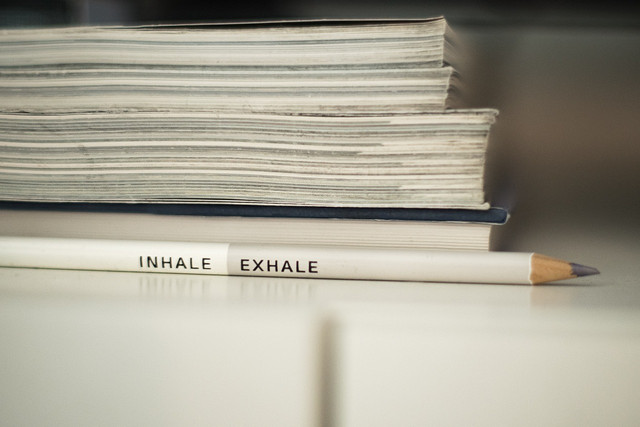


(Foto: CC0 / Pixabay / asundermeier)
Breath manipulation is associated with a huge range of benefits and it is a readily available self-soothing technique. It interrupts the stress response in several ways and just some of the research-based benefits include increased comfort, relaxation, pleasantness, vigor, and alertness, and reduced symptoms of arousal, anxiety, depression, anger, and confusion.
Medical students who used deep-breathing exercises reported decreased test anxiety, nervousness, self-doubt, and concentration loss. This is because deep and slow breathing stimulates your vagus nerve — which is the main nerve responsible for calm, balance, and homeostasis — as well as most major bodily functions. It is shut down during the stress response.
Try the 5-4-3-2-1 method or the 4-4-4 box-breath method (in for 4 seconds, hold for 4 seconds, and release for 4 seconds) if you are a beginner. You can also simply count each breath cycle while mindfully focusing on the breath as it enters your lungs for repeated cycles. Taking prolonged, deep belly breaths is also easy and effective.
If you are an advanced practitioner and feel that adding some guided imagery might help, why not try using tummo as a self-soothing technique to activate your inner fire instead of your inner fighter or flyer?
4. Get Grounded in Soothing Mother Earth



(Foto: CC0 / Pixabay / Pexels)
Why not use the planet’s natural balancing energy as a self-soothing technique? Alleviating stress and promoting calm is just one of many grounding benefits. Walking barefoot is the most common grounding technique practiced across the world. Just let your skin connect to Mother Earth.
You could also try some wild swimming if a natural body of water is accessible to you. You could also go outside and enjoy some nature therapy — feel it with your hands and/or feet. The practice of grounding is supported for improving low mood and post-traumatic stress disorder because of its influence on the nervous system and is being investigated for a range of mental and emotional disorders.
5. Self-Soothing Techniques: Get A Little Touchy



(Foto: CC0/ Unsplash/ De Andre Bush.)
Human touch can be a very powerful gesture that makes us feel better after a traumatic event. This is because of the neurochemical changes touch brings about inside the body. The good news is that you can apply this soothing technique yourself.
Self-touch gestures like hugging yourself or placing your hand on your heart are effective at helping the body to reset. These self-soothing touch techniques have been shown to reduce the stress hormone cortisol in response to psychosocial stress in clinical research.
6. Try Self-Stressing Techniques



(Foto: CC0 / Pixabay / Monoar_CGI_Artist)
Self-soothing with stress might sound a little crazy but wait for the science. Hormesis is a process that describes how cells respond and adapt to intermittent exposure to short periods of stress or low doses of agents that would be harmful and promote chronic stress in large amounts. Hormesis appears to promote long-term homeostasis and healthy cell functioning.
High interval intensity training — which involves switching between brief explosions of high-intensity exercise and short recovery periods — heat and cold exposure, and intermittent fasting are common examples that are associated with positive hormetic stress. You could splash some cold water on your face, try some cold water swimming, or bursts of intense high-intensity interval training as self-soothing techniques to manage stressful events in your life. If you’re very stressed, try an ice bath for immediate effect.
7. Have a Self-Soothing Swallow



(Foto: CC0 / Pixabay / stokpic)
Taking a few moments after a traumatic event and sipping some cold water will stimulate the vagus nerve via the swallow reflex. If you mindfully engage the senses as you sip, your focused attention will also relieve the stress response and allow your logical mind to kick back in again. You could also try calming tea varieties for stress and anxiety and snuggle up for some self-care.
8. Self-Soothing Techniques: It's in Your Own Hands
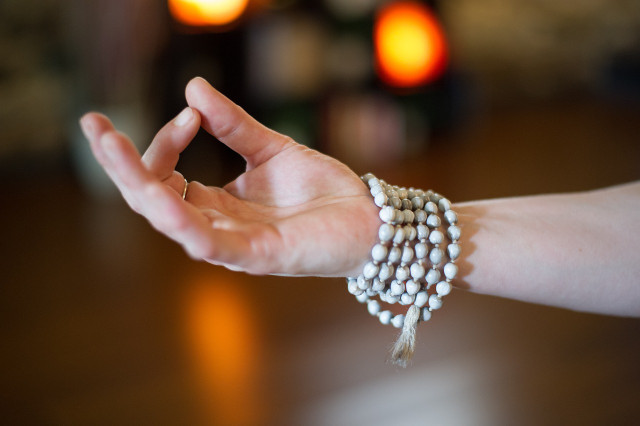


(Foto: CC0 / Pixabay / laurajuarez)
Mudras is a term that describes a variety of hand gestures often used in tandem with meditation and yoga practices. These hand gestures have been used as self-soothing techniques for millennia and are associated with balance, healing, and homeostasis.
According to yogis, mudras are thought to influence:
- Breathing
- Heart rate
- Blood pressure
- Activity of glands
- Hormone rates in the blood
According to modern research, the pressure exerted by the fingertips stimulates the peripheral nerve endings. These nerves are those that lie outside of the brain and spinal cord and serve the rest of the body. This in turn sends signals to the central nervous system — the brain and spinal cord — to respond. Certain mudras initiate a calming response from the nervous system — and subsequently the endocrine system.
In Chin Mudra, the fingertips of your index meet your thumb to form a circle. The rest of the fingers remain straight. Relax the back of the hands on top of the thighs, with the palms facing upward. This mudra is believed to stimulate rejuvenating processes and detoxification, and bring a sense of balance by relieving:
- Anxiety
- Nervousness
- Anger
- Mental distress
- Digestive disorders
Read more:
- Best Morning Routine: 10 Tips for Healthy Morning Rituals That Will Kickstart Your Day
- How to Reduce Stress: 7 Ways to “Decelerate” Your Life
- 12 Practical Tips for Minimalist Living: Make Your Life Easier
Important Information regarding Health-related Topics.
** Links to retailers marked with ** or underlined orange are partially partner links: If you buy here, you actively support Utopia.org, because we will receive a small part of the sales proceeds. More info.Do you like this post?






